Our group uses the Arecibo Observatory and the Goldstone Solar System Radar to obtain high-precision measurements of asteroid shapes, spins, masses, densities, and trajectories. There are about 10 scientists worldwide who routinely perform radar observations of asteroids; and we are happy to count 4 of them as past and present members of our group. Margot, Taylor, Busch, and Naidu have authored or co-authored about 50 refereed publications on the subject of radar observations of asteroids and comets, and these publications have accumulated over 800 citations.
Our efforts include detailed physical characterization of NEAs, orbit computations for binaries and triples, astrometric measurements, Yarkovsky drift determinations, training of the next generation of radar observers, development of data-taking hardware and software, development of data-reduction software, improvements to shape modeling software, and development of a publicly-available database for archival of asteroid radar results http://radarastronomy.org.
Some notable results are described below:
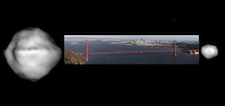
|
2000 DP107: First images of a binary near-Earth asteroid
Our 2002 paper reported a high fraction (16%) of binary near-Earth asteroids and described the formation of these binaries by a spin-up mechanism. The binary is shown here with the Golden Gate for scale. |
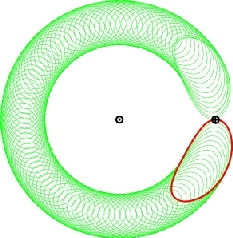
|
(54509) YORP: First detection of the YORP effect
First observational evidence that the spin rate of asteroids can change due to sunlight. The so-called YORP effect is now recognized as the spin-up mechanism that produces binaries. |
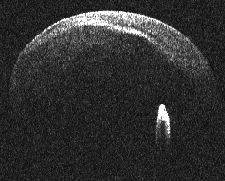
|
1999 KW4: A very close look at a binary asteroid
One of the best descriptions of a binary system due to an exquisite data set, and a fun collaboration with colleague and friend Steve Ostro (1946-2008). |
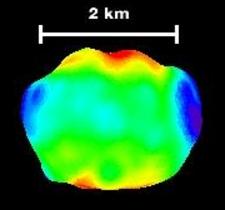
|
2000 ET70: a potentially hazardous asteroid with prominent ridges and concavities
This large near-Earth asteroid made a close approach to Earth in February 2012, and we had a great view. |

|
Asteroids in Icarus-like orbits: Probing Yarkovsky drift, solar oblateness, and GR
Near-Earth asteroids that have trajectories strongly affected by the light of the Sun, the shape of the Sun, and general relativistic effects. |
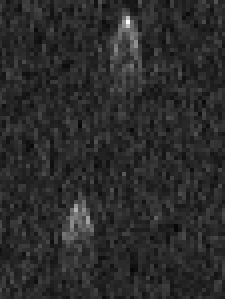
|
Hermes: An exceptional binary asteroid
The only known near-Earth asteroid with nearly equal-size components. One component spans about 30 degrees on the sky as seen from the other component. |